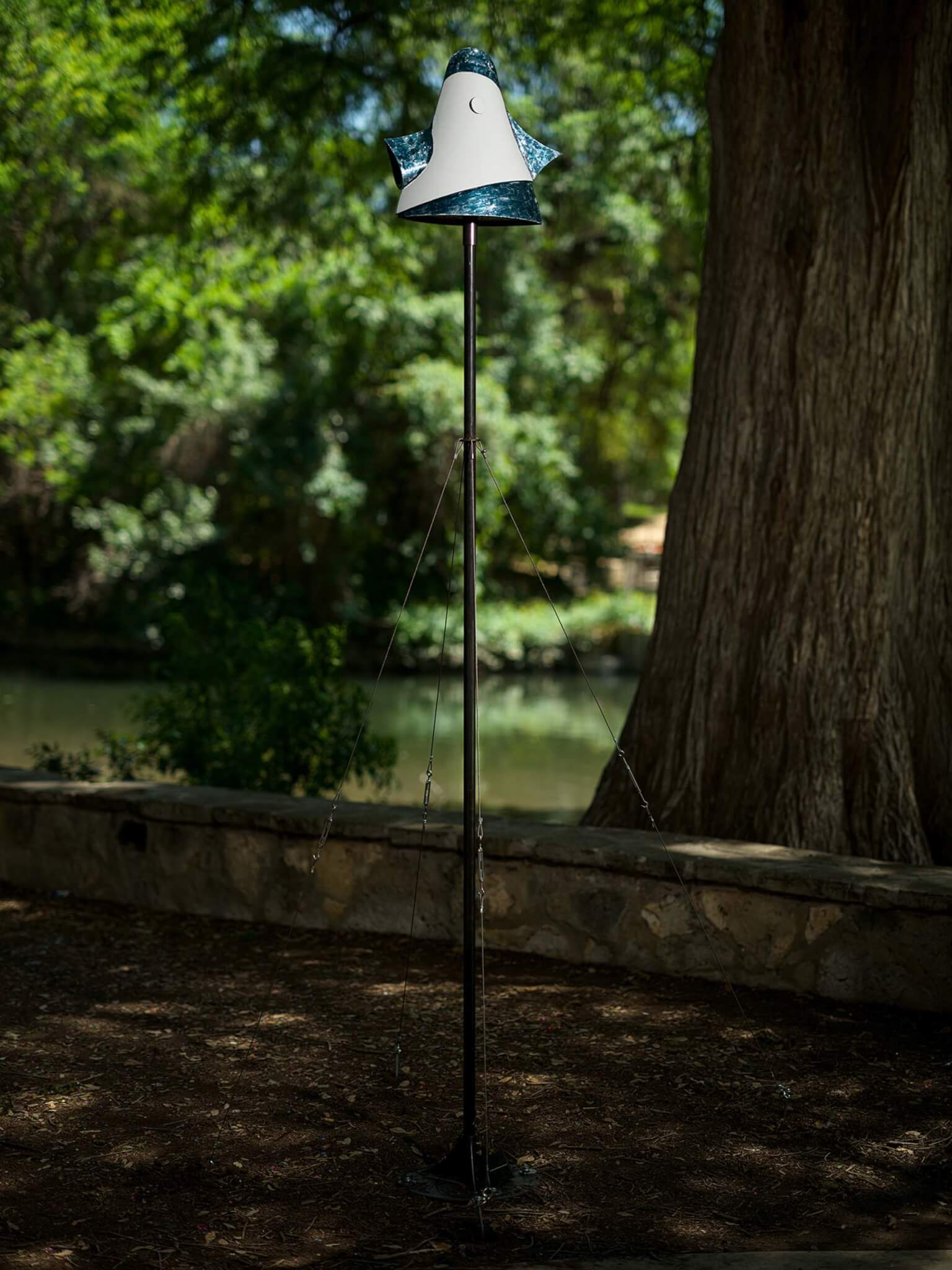House of Miracles (Casa de los Milagros) // Naser Nader Ibrahim
Text description provided by the architects.
From the top, Casa de los Milagros (House of Miracles) is all earth-colored mosaic glass curves and unexpectedly-shaped windows, the kind of place one might expect to find a caterpillar from Alice in Wonderland smoking a pipe. The varying heights of the convex slopes that make up the roof bring to mind a large sea creature in motion.

© Naser Nader Ibrahim

© Naser Nader Ibrahim
Looking at it from ground level, smooth, earth-colored concrete seems to support the top half like a particularly large stem of a mushroom. Finally, the curved base of the house gives it the appearance of a floating, organic creation. Indeed, the house itself is a kind of Rorschach test: like clouds or abstract art, the interpretation of its unique shape is in the eye of the beholder.

© Naser Nader Ibrahim

© Naser Nader Ibrahim
According to owner Rosalinda Ulloa, it’s been referred to by different people as a mushroom, an octopus, a bat cave, a flower, and even pie-topping meringue.
Photographer Naser Nader Ibrahim recently photographed the fanciful home designed by the renowned architect in conjunction with the owner and her young children, one of several nestled in the cloud forest on the outskirts of Xalapa, Veracruz.

© Naser Nader Ibrahim
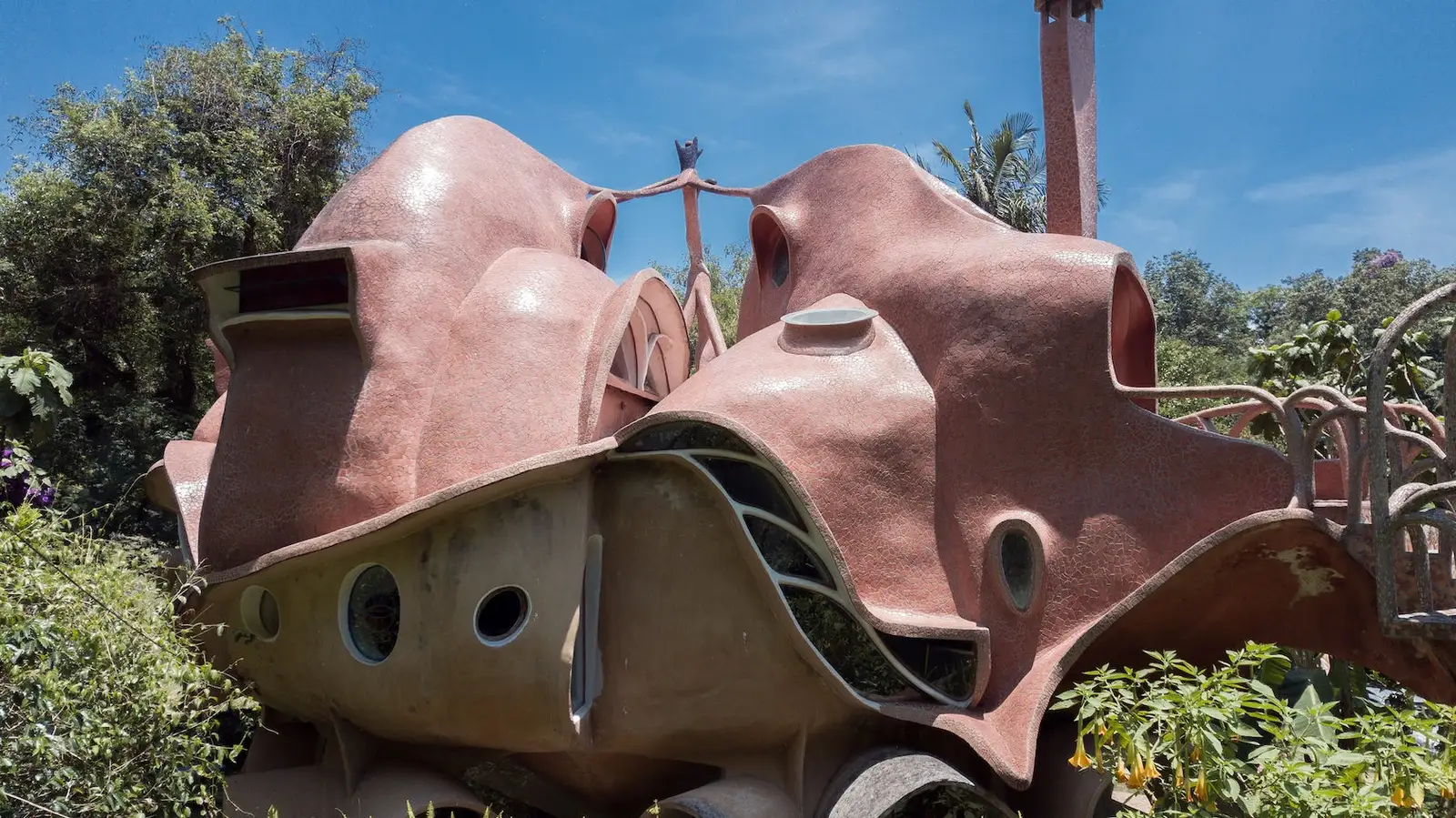
© Naser Nader Ibrahim
Baptized Casa de los Milagros (House of Miracles) because Ulloa considered it a miracle that a newly-single mother of two was able to build a house at all given her modest budget, it was built in stages beginning in 1995 and completed in 2002 (additions were made without the original architect in 2006).
Built in stages and without a traditional blueprint, the home is the product of long conversations with the family who would first occupy the space.

© Naser Nader Ibrahim

© Naser Nader Ibrahim
“What are your wildest dreams?” was the starting point, and the various answers would include slides and fire station poles, a salamander-like creature creeping toward the fireplace on the ceiling, a light-filled kitchen, and elevated nest-like sleeping quarters with windows for stargazing at night and sun-greeting in the morning: wombs with a view.
The house is also a quilt, parts of it made from found and gifted materials.

© Naser Nader Ibrahim

© Naser Nader Ibrahim
The two rows of circular windows above the stairs, for example, were a gift from a friend of the Ulloa’s. Upon receiving them, she and Danilo Veras Godoy spent hours playing with them and deciding not where to put them, but what to build in order to showcase them (they now give light to the stairwell, climbing from the base of the house to the top).
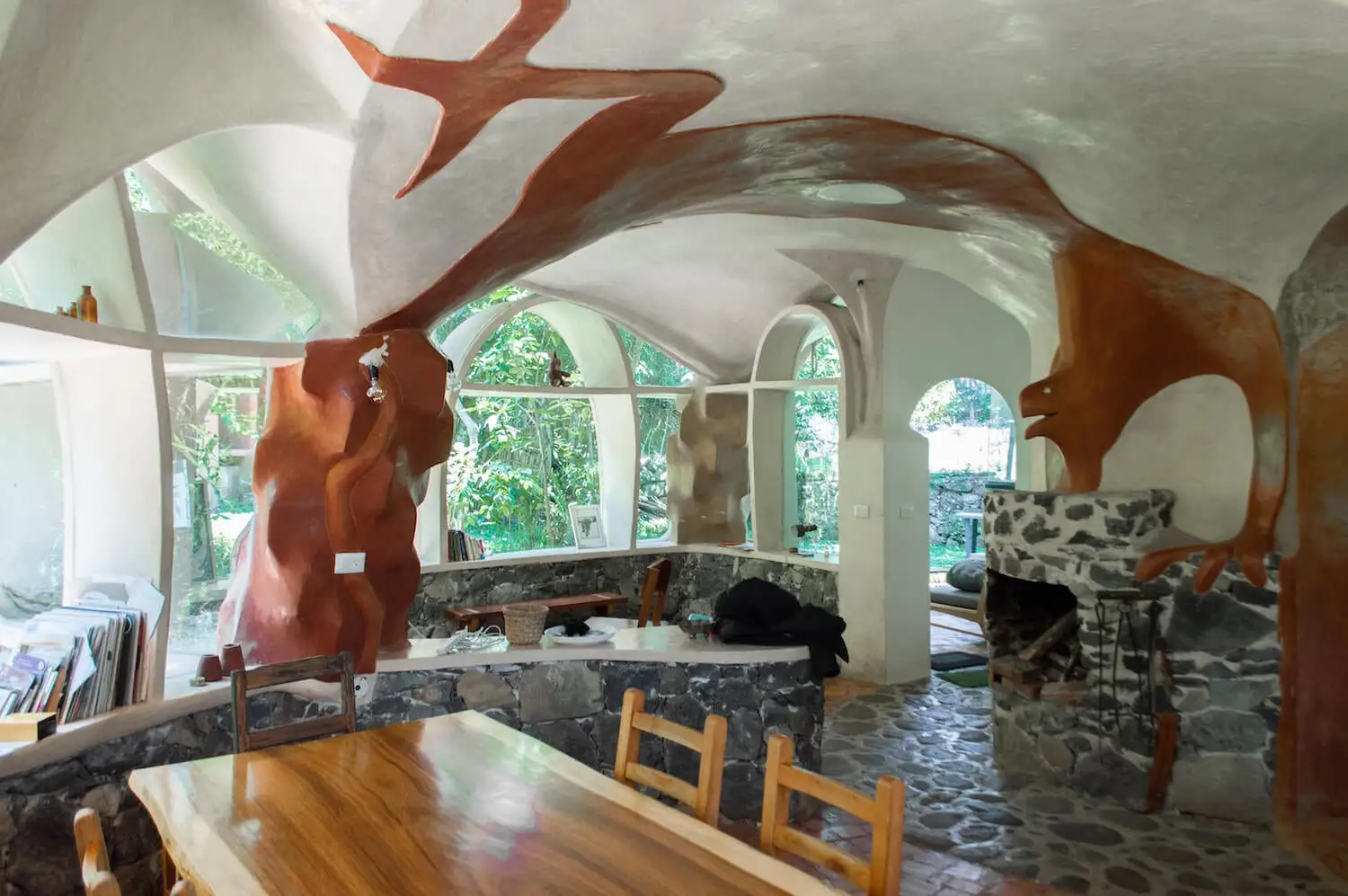
© Naser Nader Ibrahim

© Naser Nader Ibrahim
A stained-glass window in the living room was also a gift for which a place was made in the home. Animals, both purposeful and suggested, grace the whimsical home as well: an upstairs bathroom sink is in the shape of a lion’s head, while some would say that the downstairs faucet looks like a blue bird’s beak.
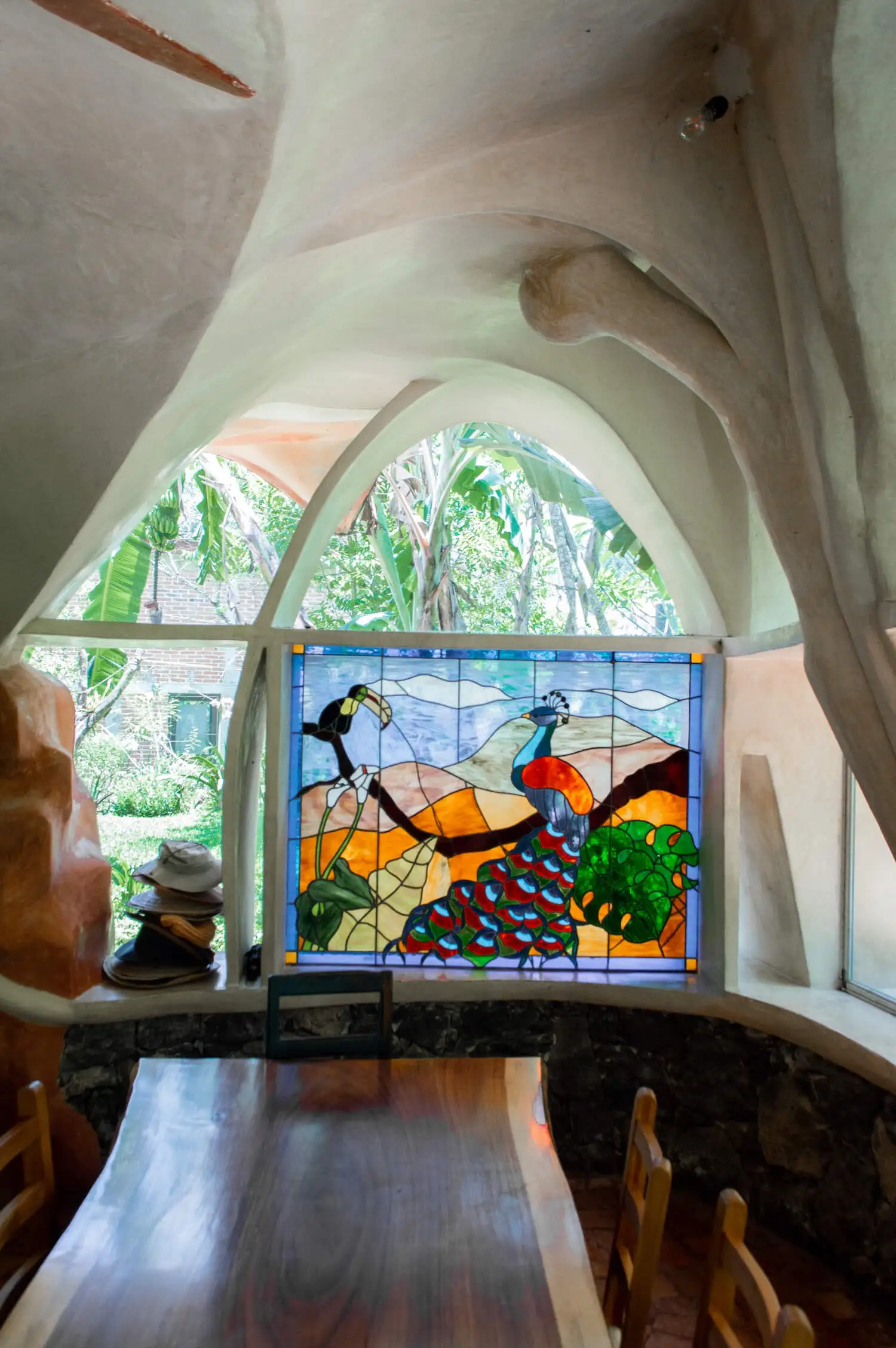
© Naser Nader Ibrahim

© Naser Nader Ibrahim
The salamander-like figure above the fireplace appeared as a result of the young family’s imagination and the architect tying a crayon to a long stick to trace the figure. Atop the entire structure, a snake made by Ulloa wraps around a staph as a triumphant crown for the palace, a symbol both of female sensuality and the overcoming of the owner’s own fear of the reptile.
Entering the house, one might imagine themselves inside of a snail’s shell.

© Naser Nader Ibrahim

© Naser Nader Ibrahim
The layout is circular, both floors consisting of several curved rooms around one central column: real on the first floor, imagined on the second. On the ground floor, one can find, circling from left to right, the living room, the dining room, the kitchen, the stairwell, and the downstairs bathroom.

© Naser Nader Ibrahim
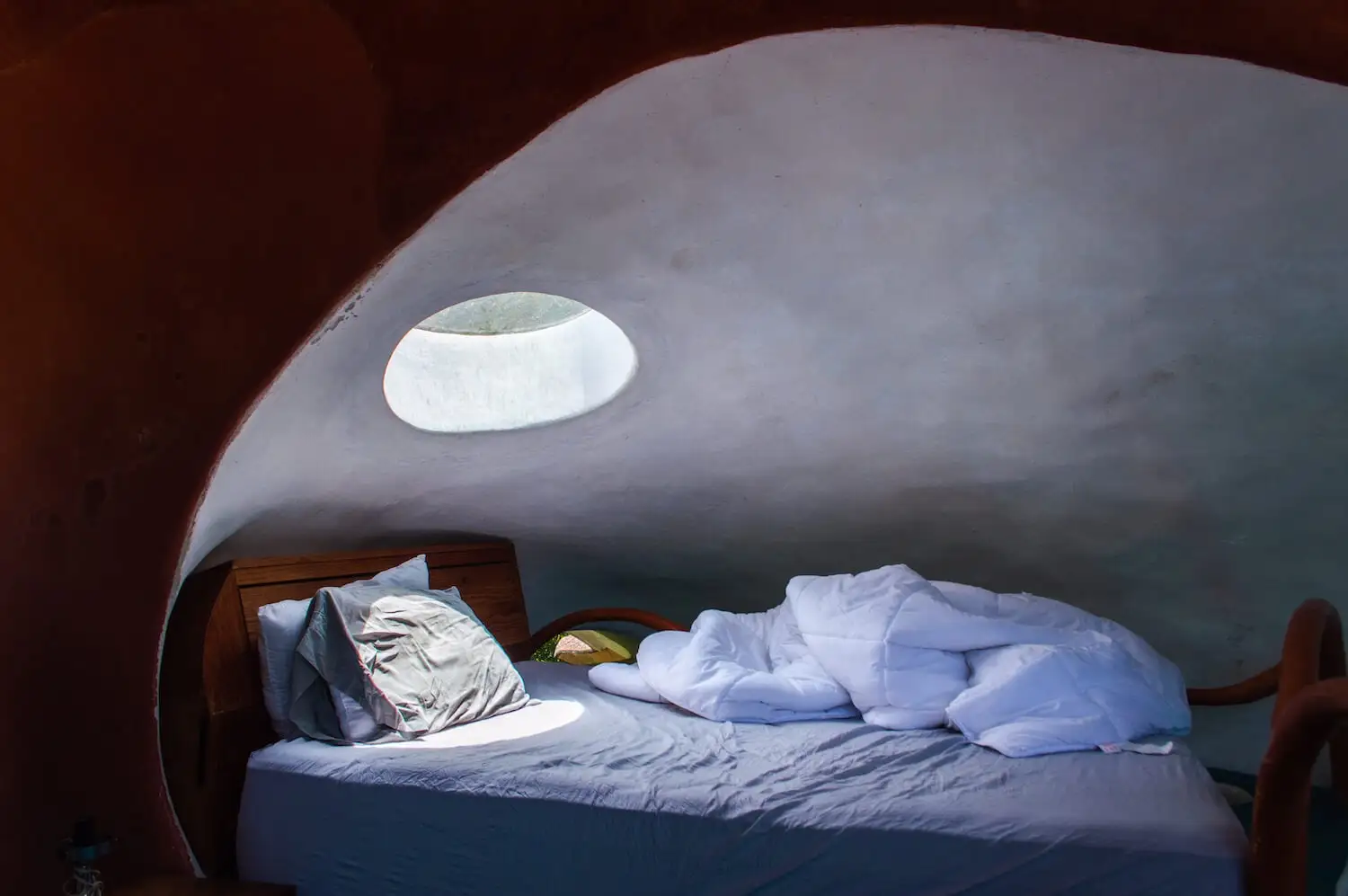
© Naser Nader Ibrahim
On the second floor, walking in the same direction, is the bathroom and dressing area followed by three bedrooms. A combination of circular, sloped, and quadrilateral windows throughout the home ensure that light enters in all the places it’s needed: in the stairwell, in common spaces, and individual rooms.
The inside of the home possesses the same otherworldly, playful features as the outside.
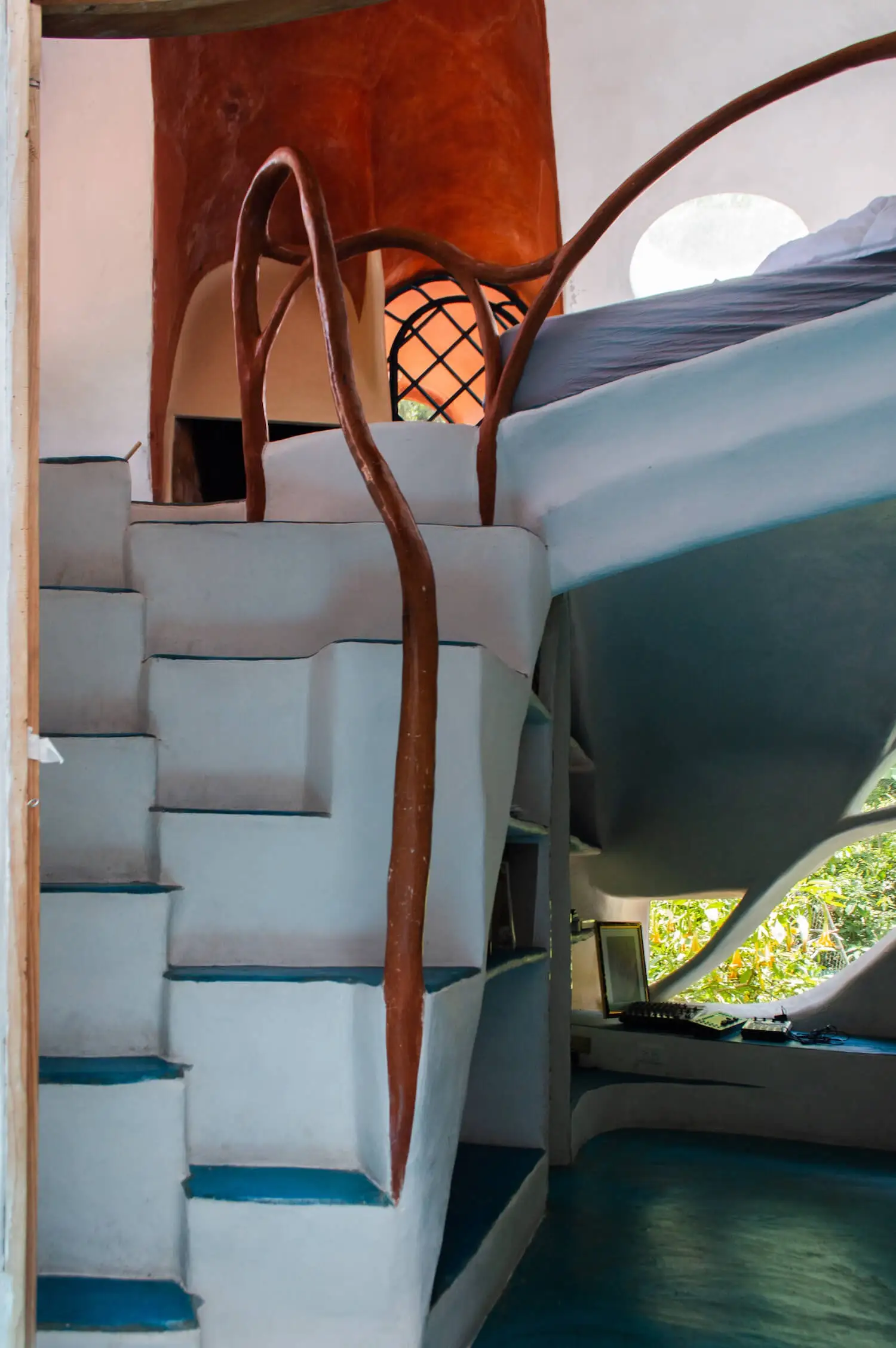
© Naser Nader Ibrahim

© Naser Nader Ibrahim
With bright, turquoise-colored floors in much of the house, the smooth neutral whites, browns, and terracotta colors of the walls serve as a canvas to let the overall design shine through. Stone structures for storage combine with glass mosaic counters in the kitchen and bathrooms, the effect being that of local utility and optimistic dreaminess.
Painted and sculpted figures grace the walls and the ceilings, and combined with the curvaceous nature of the home – hard right angles would be hard to find in some rooms – one could easily imagine that they’ve stepped into a cave or even a cenote that has somehow managed to receive natural light.
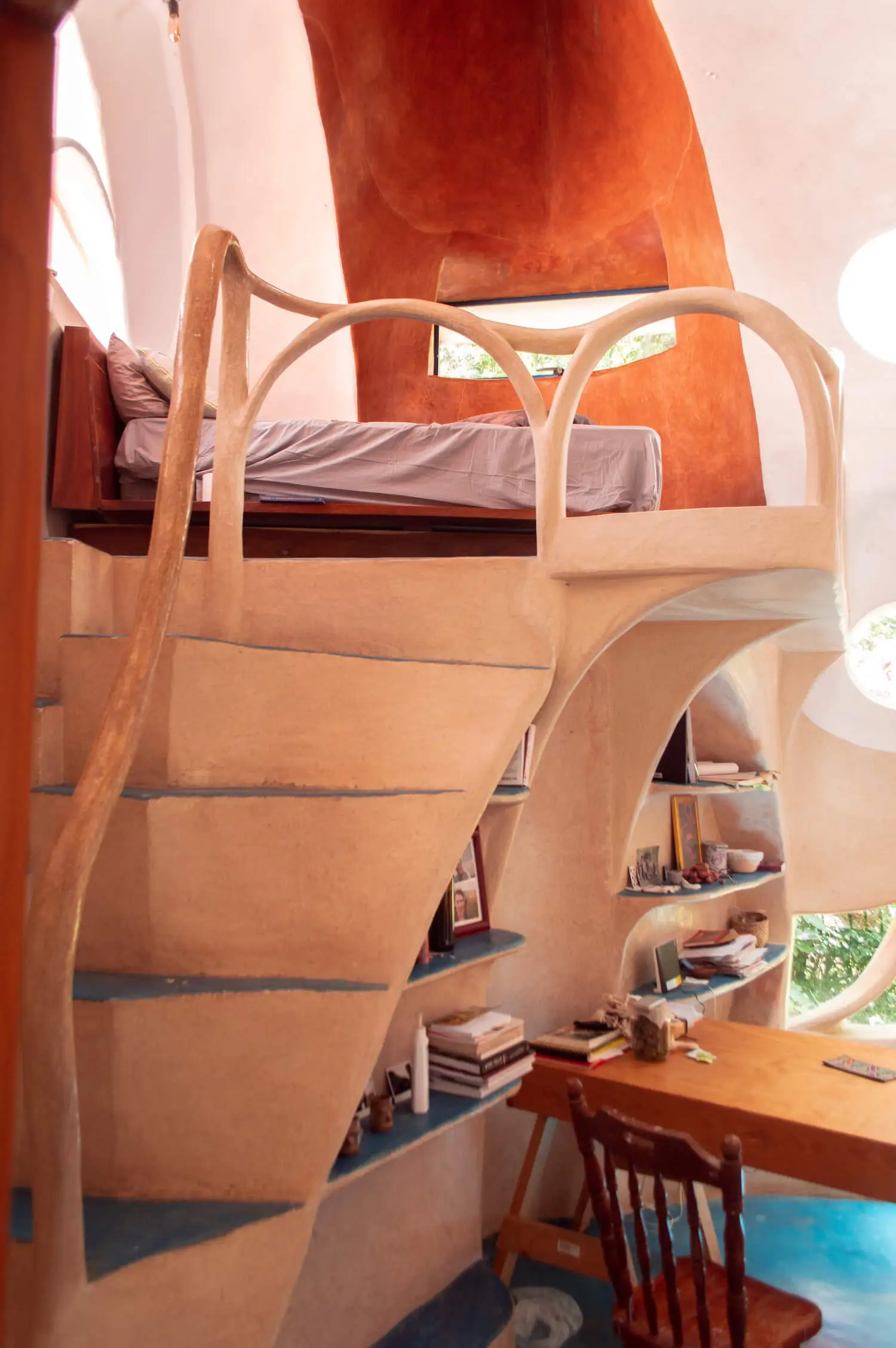
© Naser Nader Ibrahim

© Naser Nader Ibrahim
Built-in seating areas and shelves provide a kind of natural, organic furniture, and unexpected features like the absence of closets in room but the presence of a large dressing room next to the upstairs bathroom speak to the owner’s unique ideas about the way rooms might best remain orderly and clean.
Casa de los Milagros is also a place that requires physical agility to get around: alternating tread stairs lead up to raised bed platforms in each of the bedrooms, while the rest of the space is reserved for work or play, complete with built-in shelving.

© Naser Nader Ibrahim

© Naser Nader Ibrahim
An outside staircase leads to the main bedroom to allow entrance directly to one’s sanctuary when needed, and a slide was originally built in one of the bedrooms, while an outside slide on the home was later added for additional fun.
Danilo Veras Godoy (1949-2007) developed a whimsical and playful organic style of dwellings that has left its mark especially in Xalapa, Veracruz, as well as other parts of Mexico.

© Naser Nader Ibrahim

© Naser Nader Ibrahim
Born in Texas, he spent his childhood in Mexico before moving to Guatemala. Upon return to Mexico, he developed the style that he is now known for. With an eye toward how both builders and dwellers interact with the architectural creation, Veras Godoy created unique, dreamlike constructions that continue to amaze and inspire..

© Naser Nader Ibrahim

© Naser Nader Ibrahim
House of Miracles (Casa de los Milagros) Gallery

